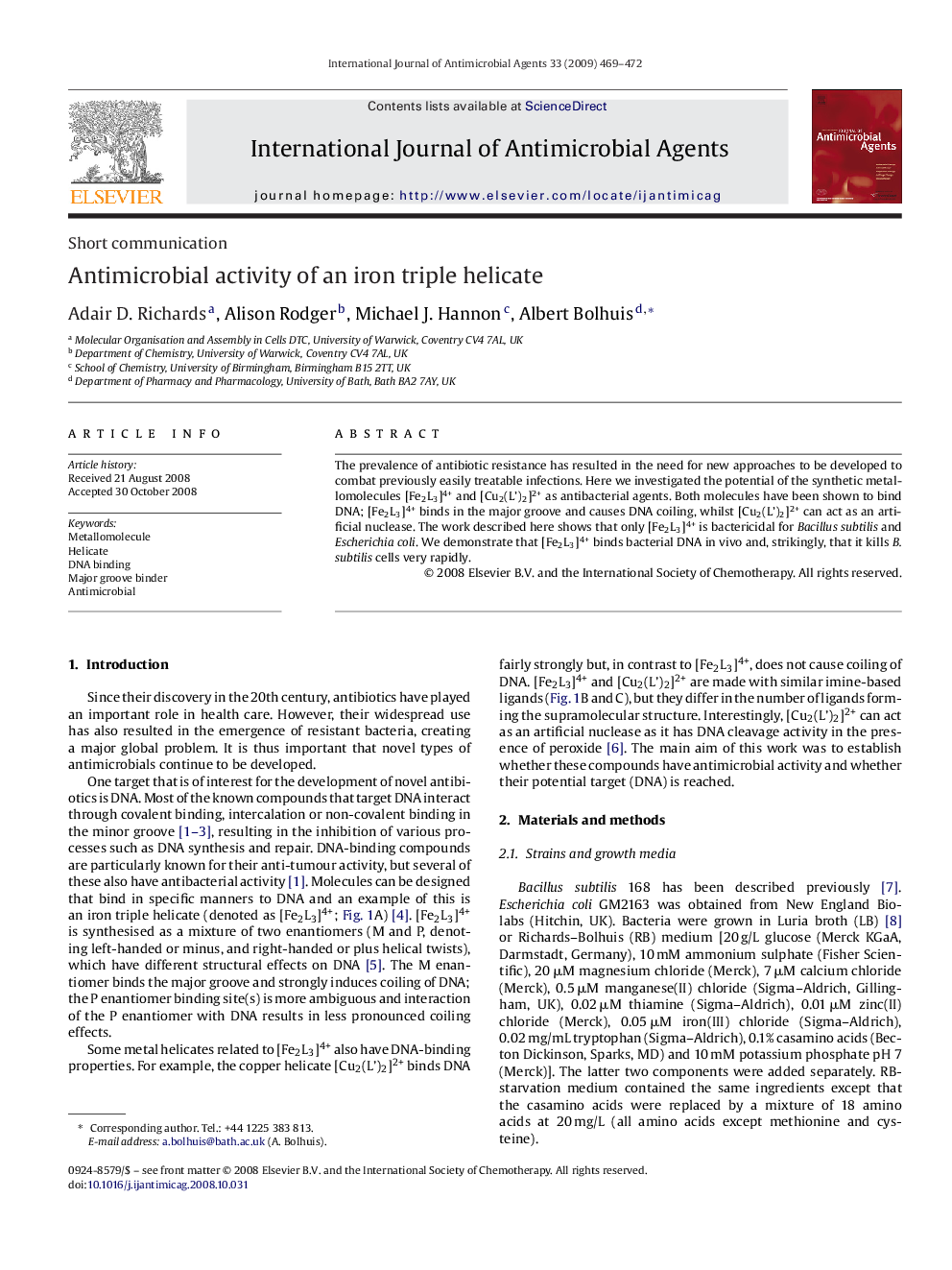| Article ID | Journal | Published Year | Pages | File Type |
|---|---|---|---|---|
| 6118536 | International Journal of Antimicrobial Agents | 2009 | 4 Pages |
Abstract
The prevalence of antibiotic resistance has resulted in the need for new approaches to be developed to combat previously easily treatable infections. Here we investigated the potential of the synthetic metallomolecules [Fe2L3]4+ and [Cu2(L')2]2+ as antibacterial agents. Both molecules have been shown to bind DNA; [Fe2L3]4+ binds in the major groove and causes DNA coiling, whilst [Cu2(L')2]2+ can act as an artificial nuclease. The work described here shows that only [Fe2L3]4+ is bactericidal for Bacillus subtilis and Escherichia coli. We demonstrate that [Fe2L3]4+ binds bacterial DNA in vivo and, strikingly, that it kills B. subtilis cells very rapidly.
Keywords
Related Topics
Life Sciences
Immunology and Microbiology
Applied Microbiology and Biotechnology
Authors
Adair D. Richards, Alison Rodger, Michael J. Hannon, Albert Bolhuis,
